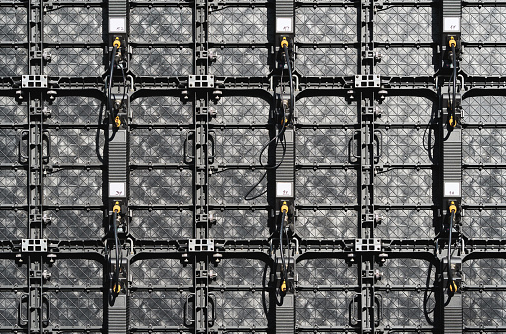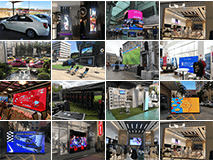LED displays are widely used in various applications, such as advertising boards, scoreboards, digital clocks, and traffic signs. They offer several advantages over other display technologies, including low power consumption, high brightness, and a longer lifespan. But how are LED displays connected? In this article, we will explore the different ways LED displays can be connected.

What is an LED Display?
Before we delve into the different ways LED displays are connected, let's first define what an LED display is. An LED display is a flat panel display that uses light-emitting diodes (LEDs) to create images or text. The LEDs are arranged in a grid or matrix, and each LED acts as a pixel that can emit different colors of light.
Parallel Connection
The simplest way to connect an LED display is through parallel connection. In this method, each row of LEDs is connected to a single pin of the controller, and each column of LEDs is connected to another pin. The controller sends signals to the LEDs through these pins, and each LED lights up according to the signal it receives.
Parallel connection is relatively easy to implement and can support a large number of LEDs. However, it requires many pins on the controller, which can be a problem for microcontrollers with limited pins.
Serial Connection
Another way to connect an LED display is through serial connection. In this method, the LEDs are connected in a chain, with each LED receiving and passing on signals to the next LED in the chain. The controller sends a stream of data to the first LED, which then sends it to the next LED, and so on.
Serial connection requires fewer pins on the controller and is therefore more suitable for microcontrollers with limited pins. It also allows for longer cable distances between the controller and the LED display.
However, serial connection can be slower than parallel connection, as the data must pass through each LED in the chain before reaching its destination.
Multiplexing
Multiplexing is a technique that allows a large number of LEDs to be controlled with a limited number of pins on the controller. In this method, the LEDs are organized into rows and columns, and the controller sends signals to each row and column in a specific sequence.
For example, if there are eight rows and eight columns, the controller will send signals to row one and column one, then row one and column two, and so on until it reaches row eight and column eight. This process is repeated rapidly, creating the illusion that all the LEDs are lit simultaneously.
Multiplexing requires careful timing and coordination between the controller and the LED display. It can also cause some flickering or ghosting effects, especially if the refresh rate is too low.
Conclusion
In summary, LED displays can be connected through parallel connection, serial connection, or multiplexing. Each method has its advantages and disadvantages, and the choice depends on the specific application requirements.
Parallel connection is simple but requires many pins on the controller, while serial connection requires fewer pins but can be slower. Multiplexing allows for a large number of LEDs to be controlled with a limited number of pins but can cause flickering or ghosting effects.
Overall, LED displays are versatile and efficient display technologies that can be used in a wide range of applications. By understanding the different ways LED displays can be connected, designers can choose the most appropriate method for their specific needs.
NSELED is a company committed to providing solutions for motion LED display and Commercial LED display. NSELED offers optimum user experience to each customer with high quality, economical products, as well as professional services. Contact us now!

 English / America
English / America 简体中文 / 中国
简体中文 / 中国 Español / España
Español / España Italiano / Italia
Italiano / Italia












